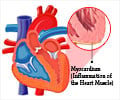Asking elderly patients how much they exercise can help predict their risk of heart disease and death, said researchers.

‘Among elderly, a simple assessment of exercise activity during appointments for atherosclerosis screening can lead to earlier interventions and ultimately improve care.’





A team of investigators assessed 2,318 patients between the ages of 65 and 84 who underwent coronary artery calcium (CAC) scanning--a chest computed tomography scan that detects and measures the amount of calcified plaque in patients' coronary arteries--between August 31, 1998, and November 16, 2016. Patients filled out a questionnaire before the scan, including a single item which asked them to rate their current level of physical activity on a scale from zero (none) to ten (always). Researchers also took note of the patients' resting heart rate, blood pressure, height, and weight. They also took their medical history into account, including hypertension, diabetes, and tobacco use. The researchers followed the patients for ten years and looked at the death rate. They found a relationship between both the magnitude of CAC abnormality and mortality and physical activity and mortality. During the study period, 23 percent of the patients died, at an average rate of 2.3 percent per year. Those who reported less physical activity had the highest mortality rates (2.9 percent per year) compared to patients who reported more physical activity (1.7 percent).
Patients with low CAC scores (between 0-99)--meaning that they had little or no atherosclerosis--had low mortality rates regardless of their physical activity scores. However, among patients who had significant atherosclerosis (CAC scores greater than 400), there was a stepwise decrease in mortality risk with increasing levels of reported physical activity. The patients with high CAC scores who reported high physical activity had a measured mortality rate which was similar to that of patients who had low CAC scores but reported only low physical activity over the years of follow-up.
"Most notably, this valuable assessment of physical activity was easily obtained by asking patients just a single question about their physical activity" said Dr. Rozanski. "This emphasizes the well-touted importance of being active. Based on our data, there is no reason why this type of assessment should not become routine in clinical practice."
Source-Eurekalert















